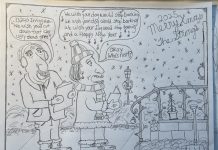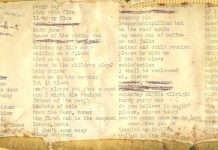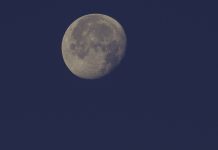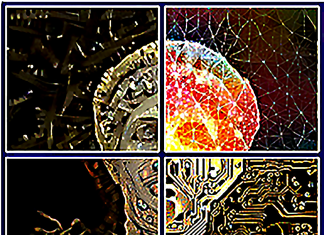When my thirty-year-old nephew told me he had, after a heart rending break up, begun to see some of the women he was meeting on a dating app, I experienced a mix of concern and relief. Also, I was curious. “How does it work?” I said.
I knew about the infamous swipe but had never ventured onto a dating app. He explained the profiles, the photos, and the response protocol of the app he used. He showed me a dating app query where one party, in this case a woman, selected prompts from a list of options. In response to the suggestion: “The way to win me over is—” she had entered “Genuine Chivalry.”
My nephew had responded: “I will literally lay down in a puddle and you can walk on me.”
“Does she want to go out with you?” I asked.
“Yep.”
My nephew’s romantic options are possibly the most varied and accessible American dating culture has ever offered. Over the last fifty years, a multitude of love seeker enterprises and broken heart healers have arrived to offer tools like ice breaker prompts with forward pushing appeal and humor. Before a user launches their profile, dating apps can help engineer a presentably polished yet authentic version of her or his messy self.
The ubiquitous and booming business of today’s online dating apps has achieved the deserved status of their own analytics. Dating apps are shopped and rated. In an article reviewing several dating apps, MindBodyGreen.com suggests their benefits include the opportunity to connect to “people outside regular dating pools” which I’m guessing would be friends of friends, coworkers, and encounters in dive bars (some of my former hunting grounds). And, without judgement, dating apps are fittingly described as efficient.
The decade after my divorce in the nineties, I moved on by meeting friends of friends on the basis that it was a sort of recommendation and learned quickly it was not. Co-worker situations got complicated. On an overseas NGO assignment, the alcohol saturated gatherings that followed conference dinners and meetings would have led to something memorable if I hadn’t been such an unskilled flirt. Shy. Indecisive. The time I propositioned for real, I was let down gently which I thought was the foundation of a friendly future connection. Wrong. The darkly elegant term “ghosted” did not exist. But I learned what it was.
According to the Pew Research Center four-in-ten US adults report online dating has made the search for a long-term partner easier. Does “easier” translate to more fun, more connections, or more efficient?
Another woman on the dating app where my nephew subscribed responded to the prompt: “The way to win me over is—” by selecting the option: “Getting my dog to like you”.
“What did you respond to that?” I texted him.
He wrote back: “Well, I always keep raw meat in my pocket just in case, so I got this.”
“You’re good,” I texted.
The OG of online dating is Match.com where, before we met, my husband responded to a woman whose profile attracted him. They met for dinner but he was surprised when a woman he did not recognize touched his arm. “You don’t look like your photo,” my husband who is not as chivalrous as my nephew said. “In your photo, you were a lot younger.”
The woman smiled, “But you might not have agreed to meet me if I posted a photo of me taken today.”
“Maybe not,” my husband said. “But you misled me. Well never mind, we’re here, let’s order dinner.”
“How did things go?” I asked when I heard this story.
“Some tears, some laughter, and no second date.”
Match.com’s success broke ground for eHarmony, OkCupid, Badoo, Grindr, Her, Tinder, and others. Among these apps eHarmony’s model of detailed profiles to filter out doomed matches with compatibility scoring to drive likely matches toward one another interests me because it succeeds so well in complete opposition to my personal love connection narrative.
Maybe I rendered a love seeking strategy from Hitchcock’s “Rear Window”, as I always cheer for Stella the insurance nurse played by Thelma Ritter when she chides Jimmy Stewart’s Jeff on his sterile love life.
Stella: When a man and a woman see each other and like each other they ought to come together – wham! Like a couple of taxis on Broadway, not sit around analyzing each other like two specimens in a bottle.
Jeff: There’s an intelligent way to approach marriage.
Stella: Intelligence! Nothing has caused the human race so much trouble as intelligence. Hah! Modern marriage!
Maybe I’m a warped romantic. It’s not that I thrill only to edgy kill-for-you, die-for-you love, my style is—Who are you? What’s going on? Let’s dance. Not exactly eHarmony country.
Still, singles drawn to dating apps today, particularly millennials—are wise about it and generally respectful too. Apps can promote personal responsibility and remind love seekers of common-sense red flag warnings for strangers meeting strangers: too much too soon, urgency, rudeness, obvious narcissism.
But all forms of online matchmaking flow from a single ancestral mother: the personal ad—that compact dense squint of nuanced information pitched to a niche receptor that still shows up in the back pages, and from which successful long connections nurture rich personal histories.
My friend Patricia still has a copy of the personal ad Steve answered in the independent free weekly The Reader on December 12, 1992 at 12:50 AM.
She had ended her third long-term unsatisfying relationship and was faced with reconciling her desire for a partner against a potential solitary future. She told a couple close friends she planned to publish a personal ad.
Steve responded to the ad Patricia posted and they spoke on the phone. “I got a good feeling after a brief conversation,” Patricia said, “When we met, I was surprised how handsome he was, that he dressed in shirt and tie and had a great smile.
“I knew I wanted to see him again, but when we left, I realized he did not have my phone number. But I had his. I called him. We have been together for thirty-one years.”
Steve’s twenty-year marriage had ended and he had just turned forty when he saw Patricia’s ad and decided to respond. “I had no idea that I would fall for the person who placed it,” he said.
Steve and Patricia met for lunch at a restaurant near both of their work locations. “I arrived a little early and decided to wait at the bar,” Steve said. “I knew immediately that the beautiful woman who had walked in and spoke to the hostess was Patricia.
“The table we were taken to only had a bench seat, so we had to sit next to each other, rather than across from each other. The restaurant was crowded and somewhat noisy.
“I believe we met every day until Patricia went home for a week over Christmas. I called her at her mother’s house the day after Christmas. The only phone was in the kitchen, so she talked to me with her mother and her siblings listening in. I could hear some of their comments and felt a bit sorry that she had to talk with an audience.
“We’ve been together ever since.”
The ad Patricia placed thirty-one years ago still reads like a winsome true line: hopeful, positive, and ready.
5”4”, SMILING BRUNETTE, successful, active, warm, outgoing, communicative, sensitive people person. Seeking open minded athletic, nurturing accomplished man for dating and festive occasions, 35 to 45.
Despite my own circuitous route, I wish for my nephew self-knowledge, a willingness to express desire, and the thoughtful heart to treasure it.
“Is that all you’ve got?” I asked him, and my nephew obligingly shared another exchange. When a woman on the dating app selected “You skip the small talk and get deep” in response to the prompt: “First round is on me if—”
My wise nephew replied: “Are you afraid of death?”
Cutting to the chase may be exactly what we need in our current disaster drenched beautiful ruinous time. It’s efficient. And death lurks. But the practice of looking for love whether in print, online, or data collated remains one of the most important and intimate life experiences and in all formats, at its best, still tingles with hope and humor.





























